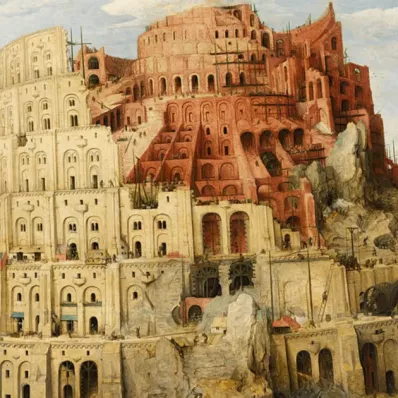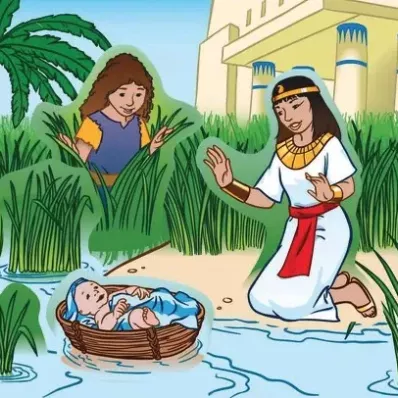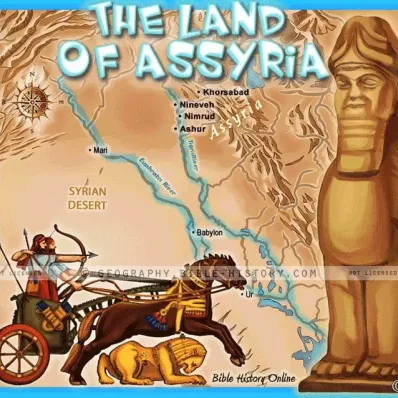Chronicles, Books of
The two books were originally one. They bore the title in the
Massoretic Hebrew "Dibre hayyamim", i.e., "Acts of the Days."
This title was rendered by Jerome in his Latin version
"Chronicon," and hence "Chronicles." In the Septuagint version
the book is divided into two, and bears the title Paraleipomena,
i.e., "things omitted," or "supplements", because containing
many things omitted in the Books of Kings.
The contents of these books are comprehended under four heads.
(1.) The first nine chapters of Book I. contain little more than
a list of genealogies in the line of Israel down to the time of
David. (2.) The remainder of the first book contains a history
of the reign of David. (3.) The first nine chapters of Book II.
contain the history of the reign of Solomon. (4.) The remaining
chapters of the second book contain the history of the separate
kingdom of Judah to the time of the return from Babylonian
Exile.
The time of the composition of the Chronicles was, there is
every ground to conclude, subsequent to the Babylonian Exile,
probably between 450 and 435 B.C. The contents of this twofold
book, both as to matter and form, correspond closely with this
idea. The close of the book records the proclamation of Cyrus
permitting the Jews to return to their own land, and this forms
the opening passage of the Book of Ezra, which must be viewed as
a continuation of the Chronicles. The peculiar form of the
language, being Aramaean in its general character, harmonizes
also with that of the books which were written after the Exile.
The author was certainly contemporary with Zerubbabel, details
of whose family history are given (1 Chr. 3:19).
The time of the composition being determined, the question of
the authorship may be more easily decided. According to Jewish
tradition, which was universally received down to the middle of
the seventeenth century, Ezra was regarded as the author of the
Chronicles. There are many points of resemblance and of contact
between the Chronicles and the Book of Ezra which seem to
confirm this opinion. The conclusion of the one and the
beginning of the other are almost identical in expression. In
their spirit and characteristics they are the same, showing thus
also an identity of authorship.
In their general scope and design these books are not so much
historical as didactic. The principal aim of the writer appears
to be to present moral and religious truth. He does not give
prominence to political occurences, as is done in Samuel and
Kings, but to ecclesiastical institutions. "The genealogies, so
uninteresting to most modern readers, were really an important
part of the public records of the Hebrew state. They were the
basis on which not only the land was distributed and held, but
the public services of the temple were arranged and conducted,
the Levites and their descendants alone, as is well known, being
entitled and first fruits set apart for that purpose." The
"Chronicles" are an epitome of the sacred history from the days
of Adam down to the return from Babylonian Exile, a period of
about 3,500 years. The writer gathers up "the threads of the old
national life broken by the Captivity."
The sources whence the chronicler compiled his work were
public records, registers, and genealogical tables belonging to
the Jews. These are referred to in the course of the book (1
Chr. 27:24; 29:29; 2 Chr. 9:29; 12:15; 13:22; 20:34; 24:27;
26:22; 32:32; 33:18, 19; 27:7; 35:25). There are in Chronicles,
and the books of Samuel and Kings, forty parallels, often
verbal, proving that the writer both knew and used these records
(1 Chr. 17:18; compare 2 Sam. 7:18-20; 1 Chr. 19; compare 2 Sam. 10,
etc.).
As compared with Samuel and Kings, the Book of Chronicles
omits many particulars there recorded (2 Sam. 6:20-23; 9; 11;
14-19, etc.), and includes many things peculiar to itself (1
Chr. 12; 22; 23-26; 27; 28; 29, etc.). Twenty whole chapters,
and twenty-four parts of chapters, are occupied with matter not
found elsewhere. It also records many things in fuller detail,
as (e.g.) the list of David's heroes (1 Chr. 12:1-37), the
removal of the ark from Kirjath-jearim to Mount Zion (1 Chr. 13;
15:2-24; 16:4-43; compare 2 Sam. 6), Uzziah's leprosy and its
cause (2 Chr. 26:16-21; compare 2 Kings 15:5), etc.
It has also been observed that another peculiarity of the book
is that it substitutes modern and more common expressions for
those that had then become unusual or obsolete. This is seen
particularly in the substitution of modern names of places, such
as were in use in the writer's day, for the old names; thus
Gezer (1 Chr. 20:4) is used instead of Gob (2 Sam. 21:18), etc.
The Books of Chronicles are ranked among the "khethubim" or
hagiographa. They are alluded to, though not directly quoted, in
the New Testament (Heb. 5:4; Matt. 12:42; 23:35; Luke 1:5;
11:31, 51).

















